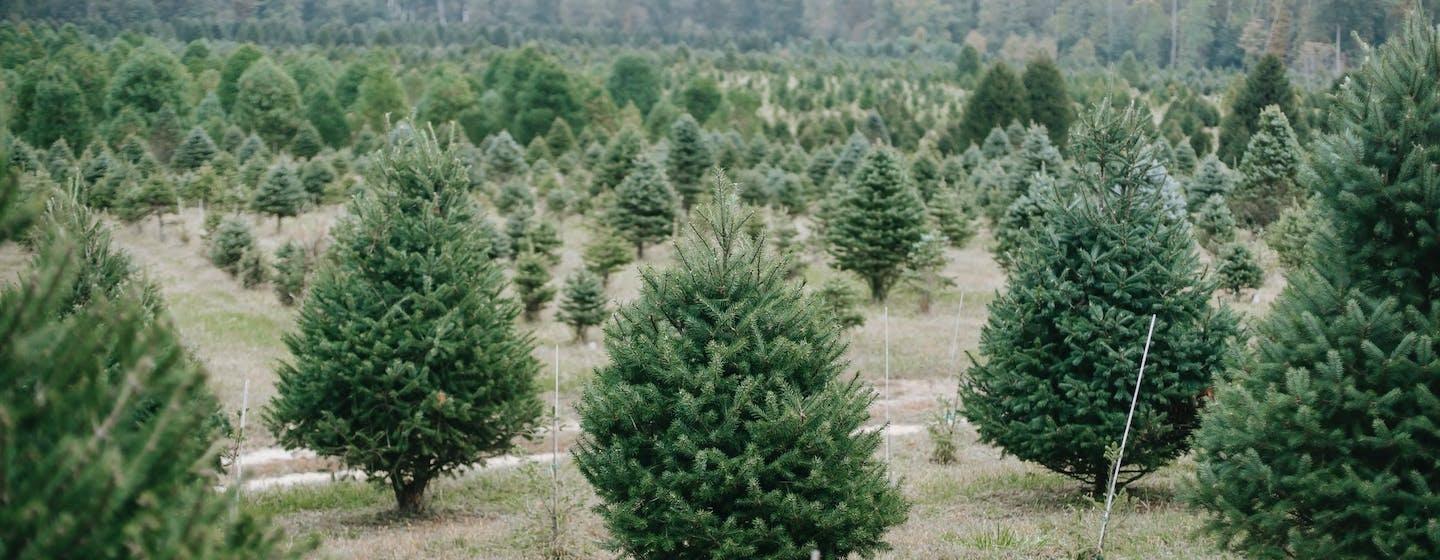Scientists Perfecting the Christmas Tree


The National Christmas Tree Association tells us that more than 95 million U.S. households celebrated Christmas by displaying a Christmas tree in their homes in 2018. About 82 percent of those were artificial trees.
Still, that’s a lot of real Christmas trees that were harvested. And to satisfy that demand, the Association says there are close to 350 million Christmas trees currently growing on Christmas tree farms in the United States.
Roughly 16+ million real Christmas trees are sold every year and North Carolina is a major producer.
The North Carolina Christmas Tree Association says there are 1300 growers producing Fraser fir Christmas trees on 40,000 acres in the state. Oregon produces the most trees annually, 8.5 million. North Carolina is #2, at 5.4 million trees.
And new data shows Ashe County, in Northwest North Carolina, is the county producing the most Christmas trees in the nation. Roughly 1.9 million trees were harvested from Ashe County.
So, in the midst of all the merriment, it’s a fair question to ask. What makes a good Christmas tree? Or if you’re a Christmas tree grower, what would encourage people to buy a “real” tree?
Answer? Surveys show people consider a tree that doesn’t shed, or drop, its needles makes for a perfect Christmas tree.
The North Carolina State University Christmas Tree Genetics Program is working on that.
Researchers are studying Fraser fir Christmas trees to improve qualities such as needle retention after they’ve been cut, as well as their overall smell and shape.
In general, trees will keep their needles through the holiday season and into mid-January if they are watered and taken care of. Of course, that also depends on how early the trees are cut. It also depends on the species and the tree’s genetics.
But that’s one of the reasons Fraser firs are already a popular choice for Christmas trees. Fraser firs hold onto their needles for a long time after harvest. The goal is to make the tree hold onto those needles even longer.
“Needle retention is a trait that is strongly controlled by the genetics of the tree,” said Justin Whitehill, Assistant Professor of Forestry and Environmental Resources at NC State and Director of the Christmas Tree Genetics Program. “Our researchers identified trees that are really good at holding onto their needles after harvest. Those trees were planted into a seed orchard. We hope to deliver those genetically improved seeds to growers by 2028.”
NC State’s research into Christmas tree genetics goes back more than 40 years. The genetically improved trees started out as seeds that were collected from natural wild stands of Fraser firs across the state. Whitehill says researchers looked at an initial set of between 30-40,000 trees and identified 25 elite trees. These elite 25 trees were selected after they had been evaluated for traits like needle retention, growth and form.
It's those elite trees form the basis of the current genetic improvement program research.
The goal is to have a tree in which only 1 percent of the needles fall off after harvest. The current crop of Christmas trees, including Fraser firs that haven’t been genetically improved, can lose almost 30 percent of their needles during the holidays.
In addition to needle retention, NC State’s Christmas tree research team is also looking at the impact of climate change on the industry.
Fraser firs are only found naturally at higher elevations in the Appalachian mountains. It’s usually above 5,000 feet and even then, the trees only grow in specific areas.
As the climate changes, temperatures rise, winters aren’t as cold, and those small niches where Fraser first grow will get smaller.
“We need trees that are going to be able to withstand or be resilient in those new future environments and climates,” said Whitehill. “But we’re also concerned about pests, because as temperatures increase, the dynamics of pests and pathogens will change as well and those populations will grow. Once pest populations increase you introduce a whole new set of programs. We need to help our growers so they can continue to be successful.”
To see some of the research into the effects of climate change on Christmas Tree farms that scientists at Appalachian State are doing, watch this Sci NC story.
Scientists are studying what effect a warming climate will have on North Carolina's Christmas tree industry. By studying tree growth at different altitudes, scientists can extrapolate how trees would grow as temperature rises. NC ranks 2nd in the country in Christmas tree sales. There are 1600 growers producing 50 million Fraser fir Christmas trees. It's a $75M industry.